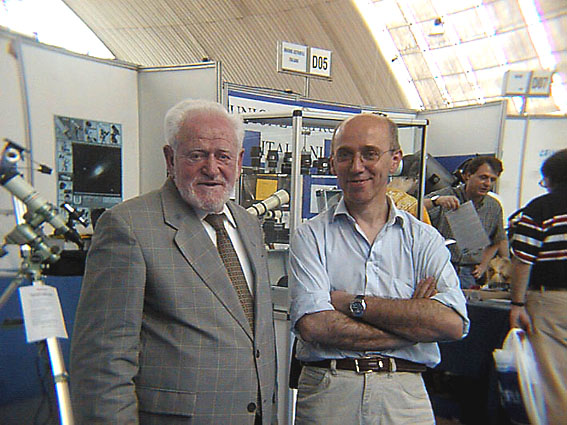






- SCOPE : Takahashi FS-102 apochromatic refractor
- MOUNT : Losmandy G11 german equatorial mount
- GUIDESCOPE : Vixen refractor 80/910mm.
- AUTOGUIDER : SBIG ST4
- D.S.C. : Losmandy encoders coupled with Celestron AAM computer
The main scope is fixed on the mount with a custom made dovetail plate, on which are screwed two rings that embrace perfectly the FS-102. Another plate (same as the previous) is fixed over the rings, and a couple of Losmandy DR-108 rings are attached on it. The Vixen guidescope is mounted into the DR-108 rings, giving it enough room for an easy searching of a guidestar. The ST4 head is attached to the Vixen refractor focuser by means of a True Technology flip-mirror, which is really useful to center the guidestar on the ST4 chip. For this purpose, I use an old Meade 12,5mm. reticled eyepiece, which is parfocal with the ST4 chip. With this device, finding, centering and focussing a guidestar is a breeze. All my pictures (except high-resolution images) are taken on 24x36mm. film, with an Olympus OM1 camera. The perfect focus is reached directly on the camera screen, and I substitute the standard one with the type 1-8, which is suggested for astrophotography. I use also a Varimagni finder at 2,5x, which is really helpful to understand when critical focus is achieved. As can be checked on the site, practically all the shots are taken with the FS-102 at F/6, using its proper reducer/flattener. This allow a larger field, and the whole frame is perfectly flat, without hints of field curvature. In addition, the higher photographic speed allows to use shorter exposures, and a higher proficiency. In effect my free time became lower every day, and I really appreciate the possibility to take more shots during a single night dedicated to astrophotography. All my images are taken on color film (or transparencies as well) unhypered. The film is developed in standard minilabs, without particular instructions. One important thing is to require the slides on strip, not framed. Being the background dark, often in the past some slides returned to me with a part of the image cut out.


